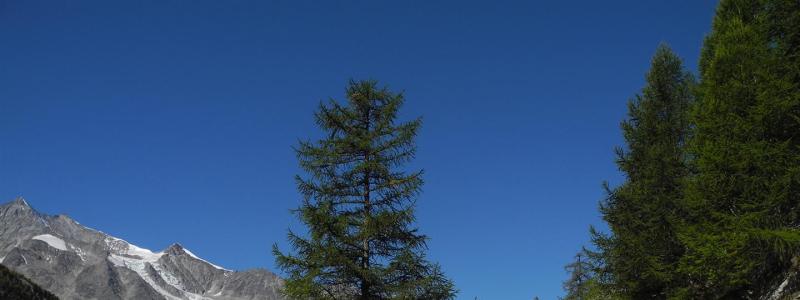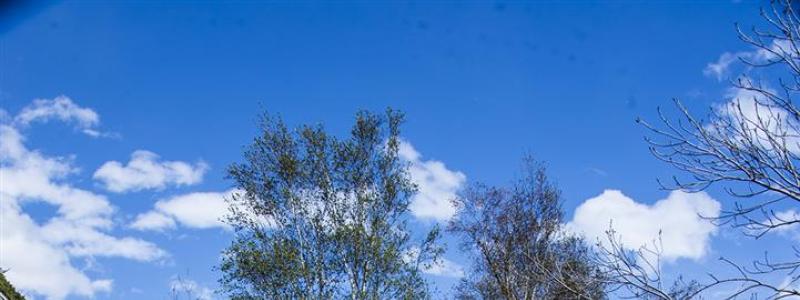The bisses of Valais – irrigation channels a tourist hit
Between the 13th and 20th centuries, irrigation channels particular to the Valais were built along the canton's slopes and side valleys – these are the bisses of Valais, which have borne witness to the epic tales of Valais society since that time.
Controversial origins
The origins of the bisses remain a subject of controversy. The first written documents attesting to their existence date back to the middle of the 13th century. Looking at the historical documentation from this period, we can see that a bisse was often constructed while mentioning the presence of a pre-existing bisse, which suggests that they had indeed been built even earlier. In spite of this, the Valais historian Pierre Dubuis has put forward the following hypothesis concerning the origins of the bisses. Up until the middle of the 14th century agriculture in the Valais was mainly cereal-based, which did not require irrigation. By 1350 the plague had decimated the local population, causing them to gradually abandon this type of cultivation. The agricultural land available turned into pastures and hayfields which favoured the development of breeding livestock – this produced a more protein-rich diet but also required extensive irrigation. The geographical layout of the canton of Valais and its dry climate, resulting from climate change at the time, obliged our ancestors to build irrigation channels – what we today call the 'bisses' – by harnessing the water in the rivers at the base of the side valleys to be brought up to the farmland. This is one of the first forms of intensive farming with the irrigated pastures producing grass both for grazing during the warmer months and, once cut down, for animal feed in the winter.
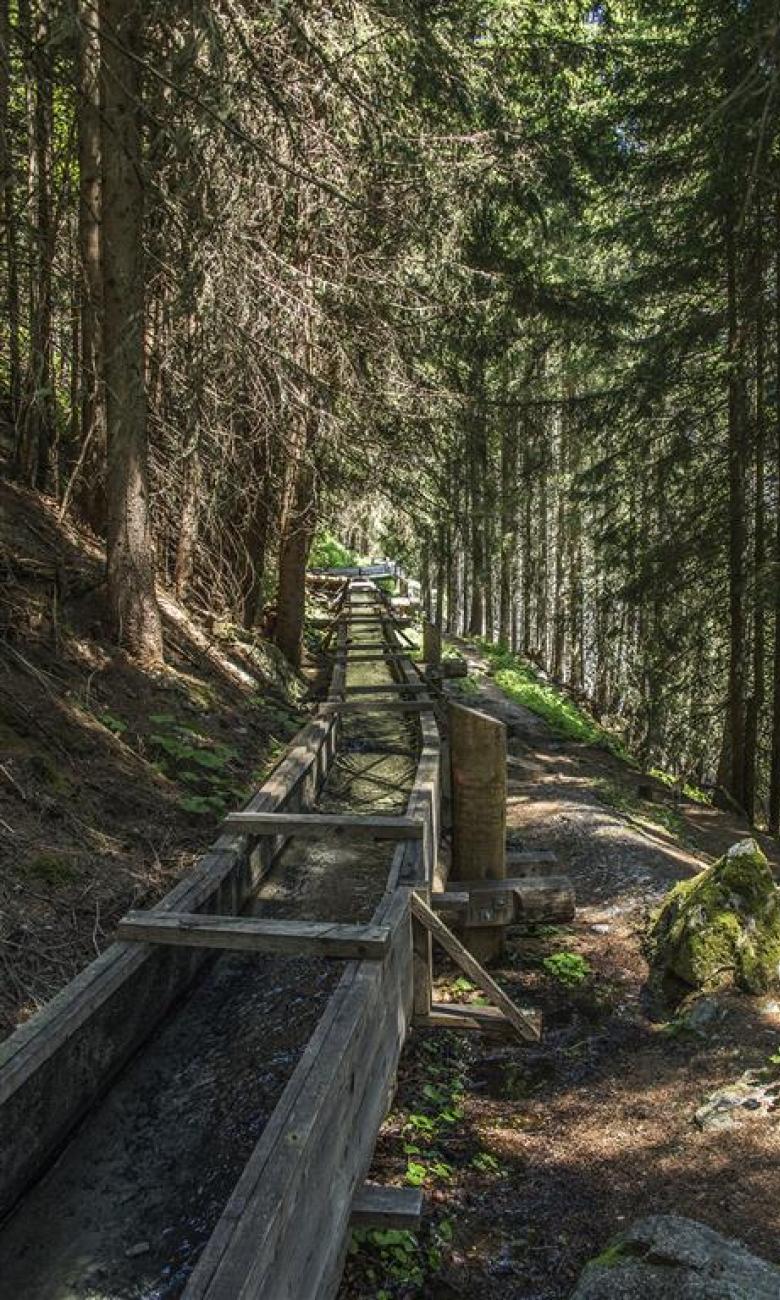
Regional names
According to the documented evidence bisse construction started to take place at the same time throughout the different regions of Valais, each with varying names. In the Lower Valais the names 'rais' or 'raye' were used. In the central parts the word 'bief' based on 'bisse' was most common, including a number of variations ('bai', 'bi', 'bie', 'bis' and 'bye'). Today, the term 'bisse' is used in most of the French-speaking regions. In Upper Valais, the German-speaking part of the canton, the ancient words 'Suonen' and 'Wasserleiter' are still in use.
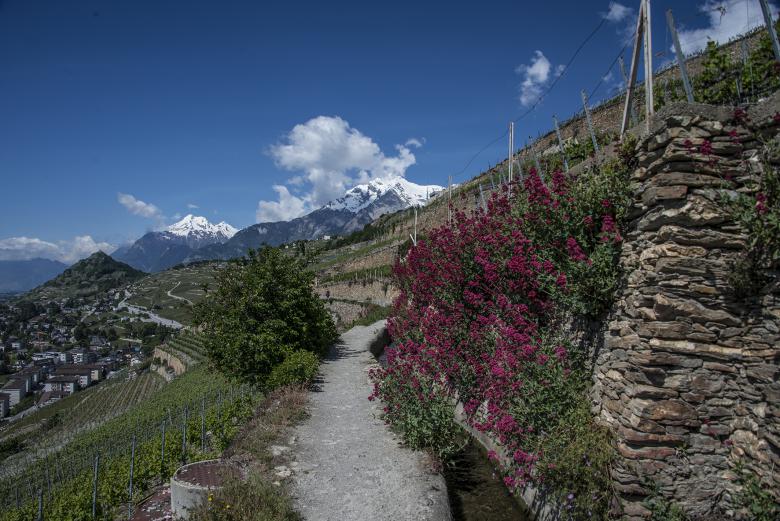
The bisses – a source of conflict
Throughout the centuries the use of the bisses has resulted in a number of regional conflicts, occasionally descending into bloodshed. Bishops and local lords were often called upon to intervene and ease tensions between conflicting communities. In fact, even though water is still considered to be a common resource, its use is a matter of survival. Given that land rights at that time were not as well codified as today, it was inevitable that nearby communities would come to blows.
Community constructions
To build these often spectacular structures – many of which cling to the dizzying rock faces as they wind their way through – the communities involved set up associations known as consortiums, some of which still exist today. The consortium members, referred to as consorts, made up the workforce for constructing the bisses: the time each person had to spend was calculated according to the amount of farmland they used. Other bisses were built by bourgeois landowners, who ensured the bisses were managed collectively for the common good of their commune. Their rules for providing the workforce were similar to those applied by the consortiums. Rarely, a bisse would be built on the initiative of a local lord who would finance the construction and pay the workers.
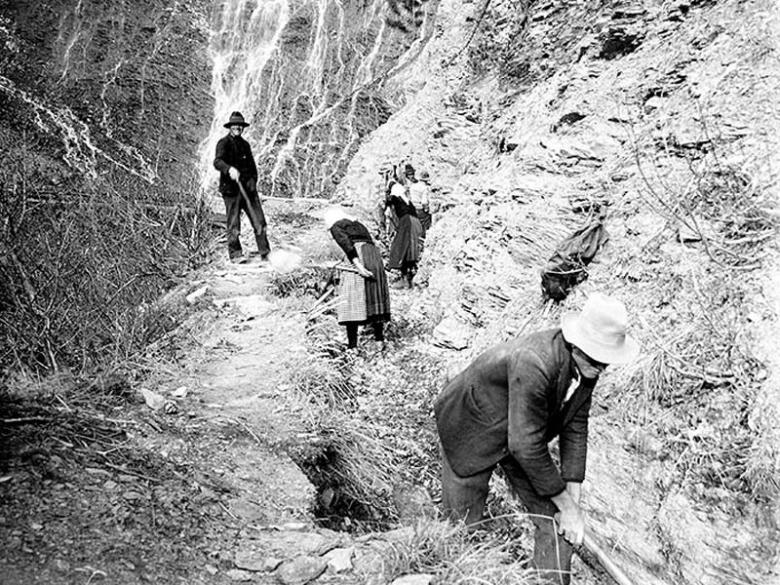
Pioneering ventures
Constructing a bisse was an extensive and often dangerous undertaking. To fully appreciate all the implications, project yourself into a time – into all the different periods of time when the bisses were being built – and imagine that the only tools available were as basic as a pick and shovel, and there was nothing but timber and ropes to secure the irrigation channels along the rock faces suspended several hundred metres above! And all of that, of course, with nothing more than muscle power and human ingenuity. This is testament to the veritable pioneering spirit of those who undertook such ventures, some of whom lost their lives doing so.
Most of the bisses are between five and ten kilometres long. The longest, the bisse of Saxon, is 28km long. It takes water from the Printse at Siviez/Nendaz, transporting it all the way up to Saxon. Levron is the second longest bisse in Valais, coursing between 2,400 and 1,900 metres in altitude in the mountain pastures of Verbier. It is 18km in length.
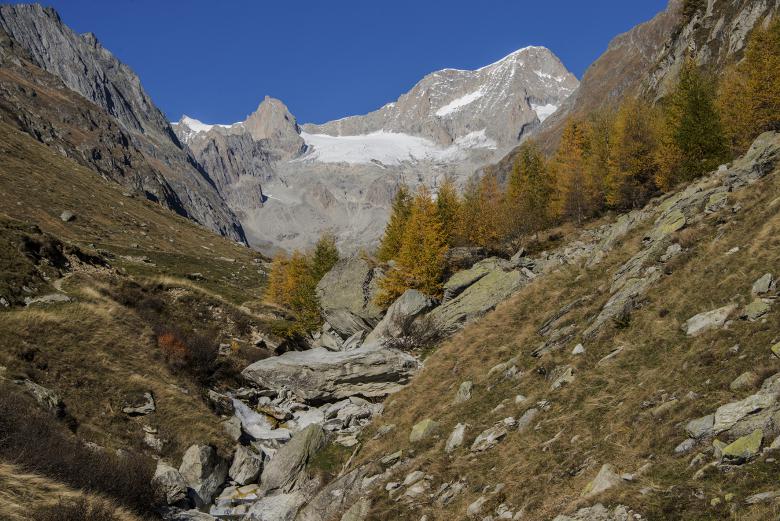
Region-wide distribution
There are bisses at every altitude and in every region of the Valais. Until the beginning of the 20th century there were more than 200 in use – around 1,800km of irrigation channels. They were maintained regularly and their usage was strictly regulated. Each bisse was supervised by a guard who sometimes stayed in a cabin along the watercourse. Some of these cabins still exist today. The guard's job was to make sure that the flow of water was good and that the beneficiary rights were properly distributed.
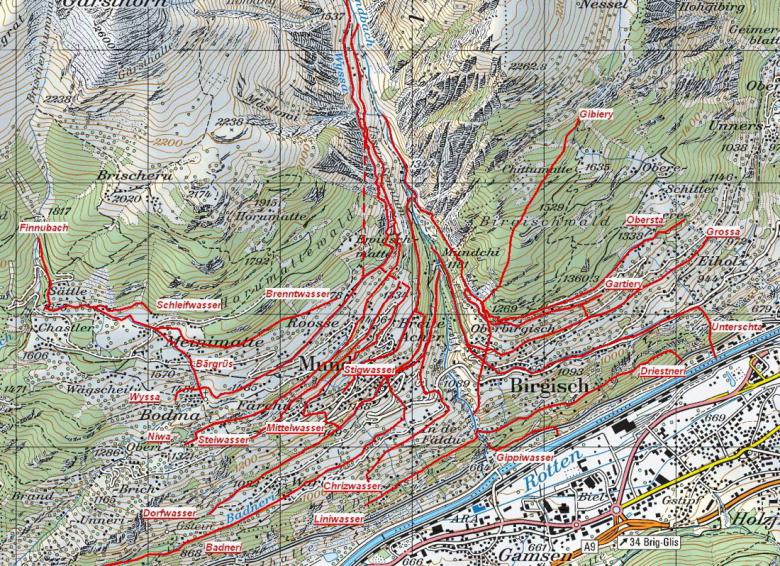
Tourism revitalises the bisses
Many of the bisses have disappeared, victims of the modernisation and economic transformation of our society today. If you take a close look at the countryside, you can sometimes make out the ruins of a bisse and imagine what course it took. Those that remain are generating renewed interest among the local population because of their touristic value, which is why they are being repaired and preserved by non-profit associations.
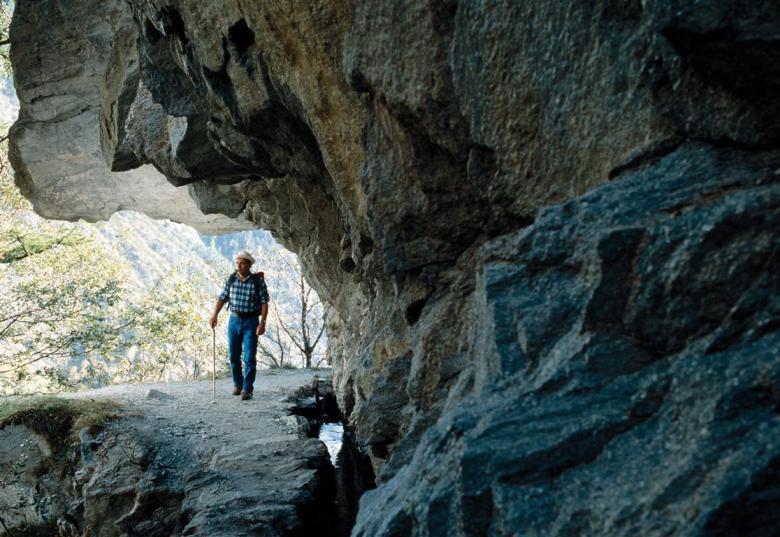
To explore the bisses and discover the magnificent scenery of Valais, go to www.les-bisses-du-valais.ch for a list of interesting waterside itineraries and walks. The site provides information on the length and level of difficulty for each walk, most of which – with their flat or gently sloping pathways – are relatively easy.

